Submerged tells three different stories without saying a word
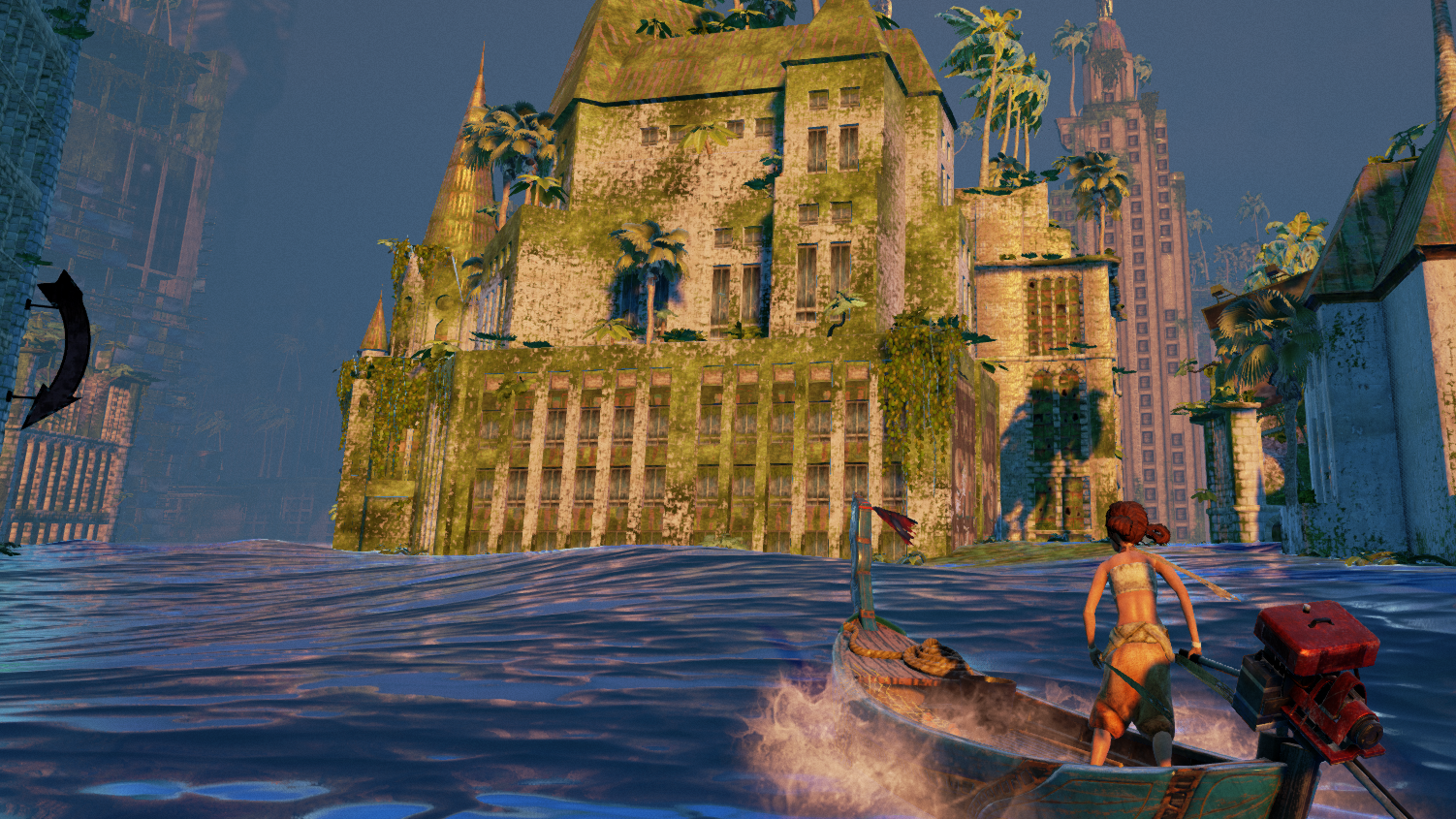
There's no combat in Submerged, the post-apocalyptic exploration and adventure game from indie studio Uppercut Games. While it has eerie moments, and even a couple frightening ones, there are no enemies. While you spend a great deal of time scaling buildings, hanging by your fingertips from ledges, vines, and pipes, you can't fall. And, apart from some on-screen explanatory text, there are essentially no words. Despite this, Submerged manages to tell three different stories in three different ways, all visually.
Submerged is about a young woman named Miku and her brother, Taku, who have arrived in a ruined city partially submerged in the sea. Taku has a severe injury, and Miku must explore the city—by boat and by climbing its crumbling buildings—in search of items like food, medicine, and bandages to save her brother's life. The three stories that slowly come to light as you progress are the story of the submerged city, the story of Taku's injury and the reason Miku brought him to the city at all, and the story of what happens to Miku once she starts exploring. Each of these stories are pieced together slowly while you play, but in different and interesting ways.
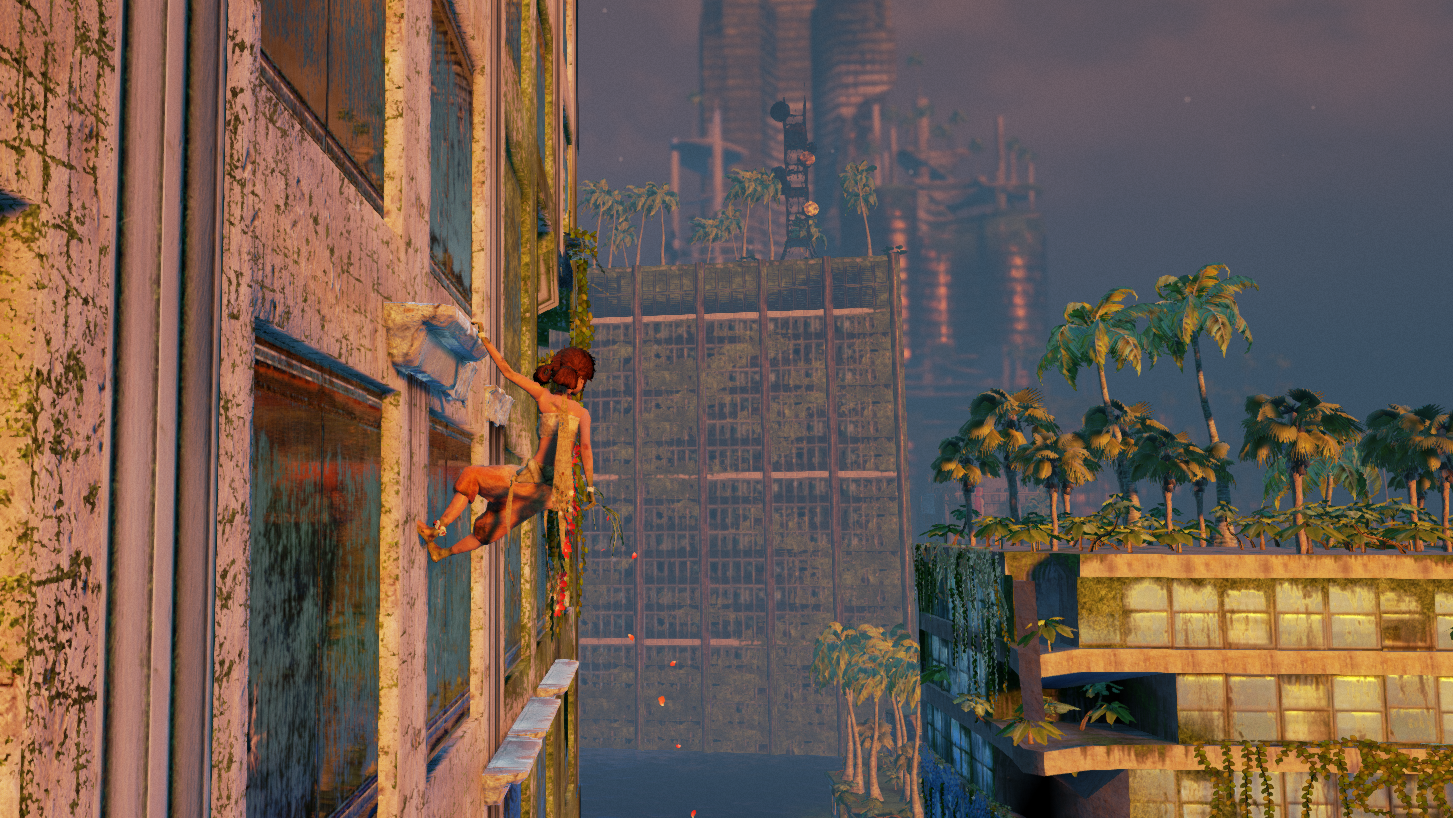
Submerged is an open world game: you can climb and explore the buildings in whatever order you like, using your boat to get around and a telescope to spot areas of interest. The buildings are essentially climbing puzzles, and you're guided by visual clues: vines with red flowers and certain types of ledges quickly become familiar and take you on circuitous routes up, down, around, and over the buildings. As you climb and explore you find pictograph clues scattered around the buildings, and they're added to your journal. They're not collected in order, so you may find a piece of the story from the beginning, another from the end, a few from the middle, and the longer you play the more you'll piece together until the story becomes more clear.
Putting together the city's story is optional, similar to hunting for collectibles in other games, like GTA 5's hidden packages or Far Cry 4's Mani Wheels, only you uncover a history of the location in addition to the feeling of having completed a task. You can also collect pictographs of landmarks and the local fauna as you encounter them.
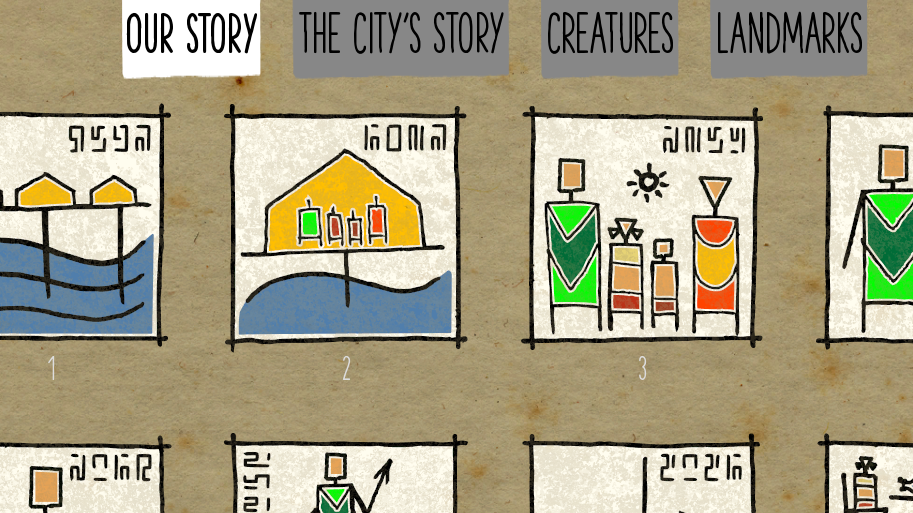
The story of Miku and Taku, how Taku was injured, and how they came to this ruined city is also told with pictographs, but it's told from beginning to end instead of in a patchwork. While you can climb buildings in whatever order you want, the first piece of Miku and Taku's story will be revealed with the first supply chest you find, regardless of its actual location. In that respect, the siblings' story is a linearly told story in an open world. You also receive a series of four pictographs at a time, almost like a comic strip—and not a very happy one—that reveals their history.
Not only are these interesting ways to tell stories, they require a little more work than, say, a journal entry or an audio diary or a cutscene flashback. There's nothing wrong with those storytelling devices when they're done well—I enjoyed Bioshock's audio diaries, for example—but figuring out what Submerged is trying to tell you can take some examination and thought in ways that listening to someone tell you a story often doesn't require. It's similar to environmental storytelling, where you're simply examining the world and putting together a narrative for yourself, and feeling that satisfying mental click when another piece falls into place.
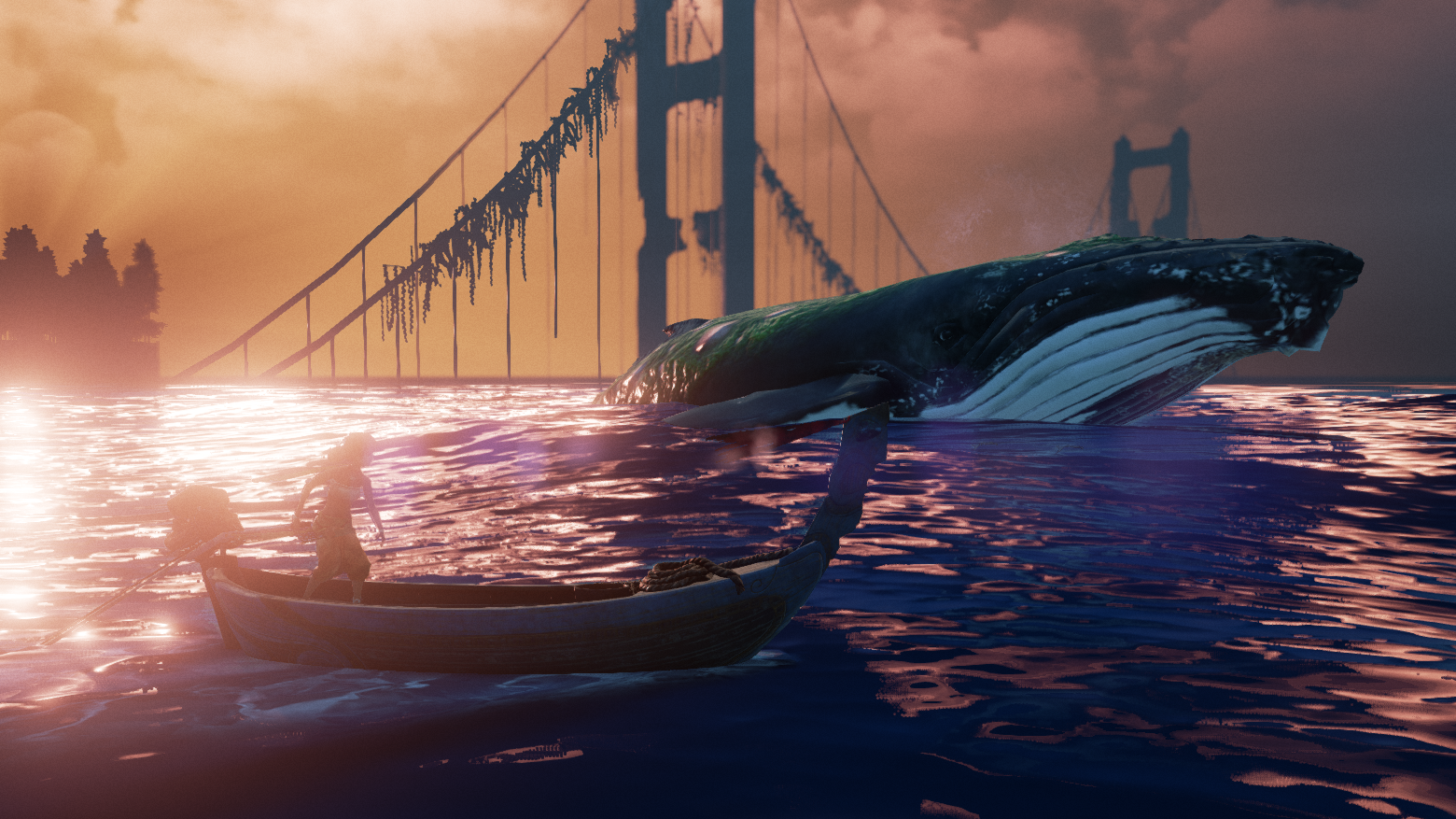
The third story is one I can't really talk about specifically, because I don't want to reveal anything about it, but it becomes evident that as you play that being in this drowned city is having a effect on Miku. You witness this effect slowly over time, entirely through visuals, Miku's body language, and her wordless reactions to what is happening to her.
Keep up to date with the most important stories and the best deals, as picked by the PC Gamer team.
The only real text in the game is the statement of Miku's goal when she sets out to find items that will help her brother, and a handful of gameplay tips. Everything else is imparted without words, which I found engaging and refreshing. With all three stories all unfolding simultaneously while you play, there's plenty of motivation to keep progressing, and allowing the player to figure out these stories for themselves is far more rewarding than simply telling them.
Submerged is now available on Steam and in the Humble store.
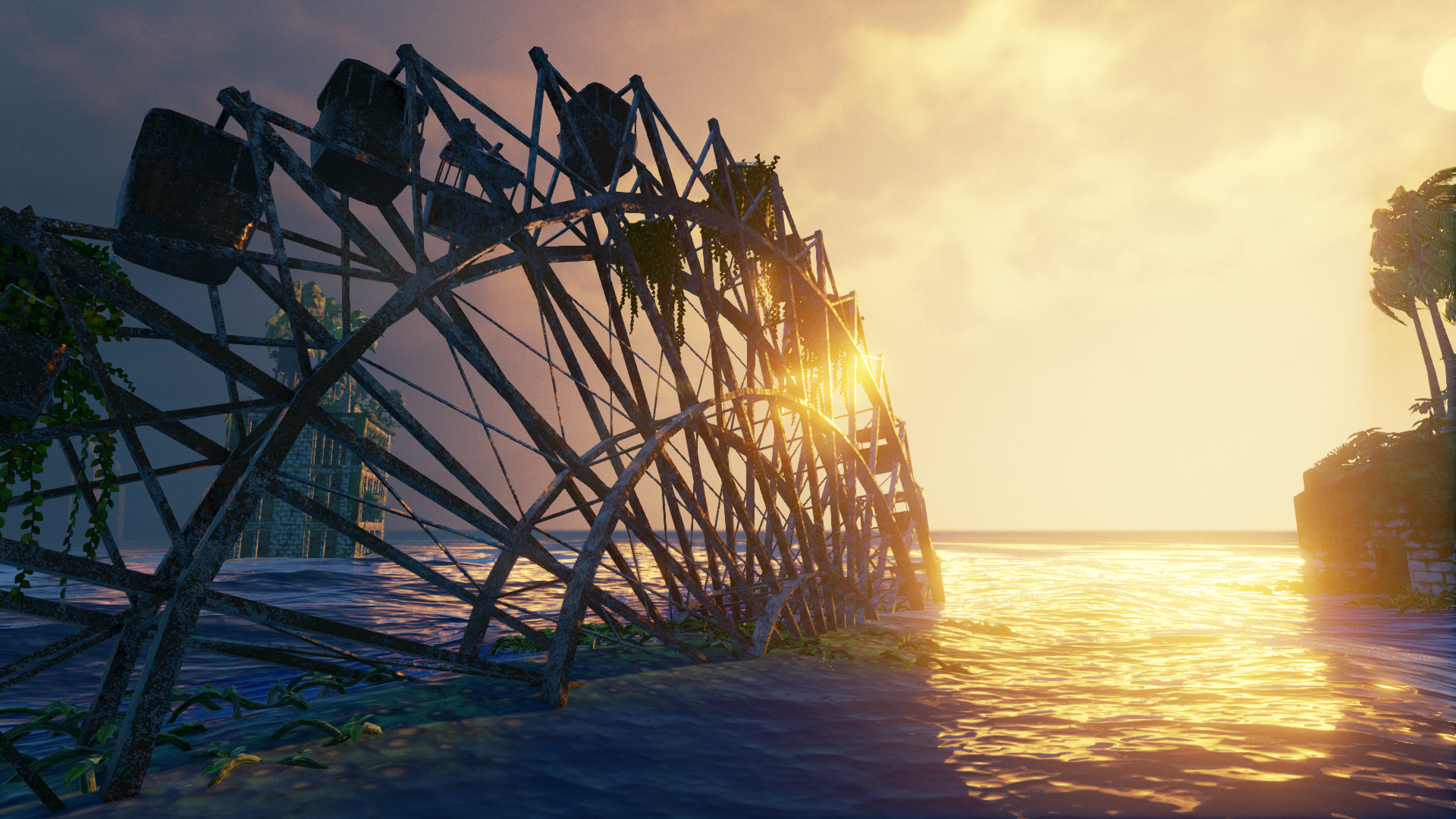

Chris started playing PC games in the 1980s, started writing about them in the early 2000s, and (finally) started getting paid to write about them in the late 2000s. Following a few years as a regular freelancer, PC Gamer hired him in 2014, probably so he'd stop emailing them asking for more work. Chris has a love-hate relationship with survival games and an unhealthy fascination with the inner lives of NPCs. He's also a fan of offbeat simulation games, mods, and ignoring storylines in RPGs so he can make up his own.

